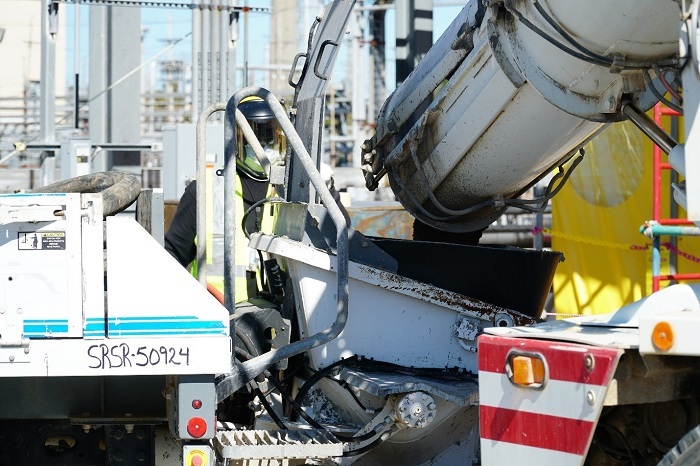 The Environmental Management Advisory Board has four new members: Brent Gerry, Julius “Jake” Washington, Celeste Greene and Michael Shapiro.
The Environmental Management Advisory Board (EMAB) welcomed four new members who will bring additional perspectives and experience to its roster.
Celeste Greene, Michael Shapiro, Julius “Jake” Washington and Brent Gerry join 13 existing members on the board.
“We’re very excited to have Celeste, Michael, Jake and Mayor Gerry on EMAB,” said Joceline Nahigian, director of the EM Office of Intergovernmental and Stakeholder Programs. “We look forward to tapping into the diverse experiences and insights they bring to the board. They will help to guide EM’s efforts as we work to advance cleanup activities. We appreciate their willingness to serve our organization and the nation in this important role.”
EMAB is chartered under the Federal Advisory Committee Act to provide independent and external advice, information and recommendations to the Assistant Secretary for EM on corporate issues relating to accelerated site cleanup and risk reduction.
The board's membership reflects a diversity of views, demographics, expertise and professional and academic experience. Individuals are appointed by the Secretary of Energy to serve as special government employees or representatives of specific interests and entities. Members serve two-year terms, which may be renewed by EM.
More information about the new members follows:
- Celeste Greene is an associate professor and program director of graduate certificates in public administration and leadership at the University of Virginia. Her research focuses on environmental justice, local government financial management and quality-of-life issues. Her most recent project is a book to be published in 2022 titled, “Environmental Justice and Resiliency in an Age of Uncertainty.” Greene served as the book’s editor and lead author.
- Michael Shapiro is the former deputy assistant administrator for the Environmental Protection Agency’s (EPA) Office of Water, which is responsible for the agency's Clean Water Act and Safe Drinking Water Act programs. Shapiro served at EPA for 37 years in a number of senior leadership positions, championing environmental justice efforts and managing a variety of hazardous waste programs.
- A senior executive at Jacobs, Julius “Jake” Washington leads strategy, client management and operational delivery of all projects supporting the Navy and Marine Corps worldwide. Washington will provide expert advice on environmental stewardship, contracting and management, large project planning and risk assessment.
- Brent Gerry is serving his third term as mayor of West Richland. He is the vice chair of the Energy Communities Alliance (ECA), an organization of local governments adjacent to or impacted by DOE activities. He was appointed to EMAB to represent the views of ECA.
The full biographies of EMAB’s 17 members can be found on the EMAB website.
-Contributor: Alyssa Harris
 A Savannah River Remediation employee monitors grout as it flows to a diversion box in Savannah River Site’s F Tank Farm.
AIKEN, S.C. – EM and its liquid-waste contractor at the Savannah River Site (SRS) have filled two tank farm structures with cementitious grout to complete a significant step toward the operational closure of the first high-activity liquid waste facilities at the Savannah River Site (SRS) since 2016.
The structures, known as diversion boxes, are located in the site's F Tank Farm. The first box was filled in early November, while the second was completed on Jan. 18. The grout provides additional structural integrity to prevent possible collapse of the boxes, thereby ensuring long-term protection of workers, the public and the environment.
A diversion box is an underground concrete structure that contains a series of connection points that allow high-level radioactive waste to be transferred from one tank or facility to another. The two boxes filled with grout have been out of operation for more than 30 years. Both boxes met regulatory standards for closure, enabling the process to move forward.
In July 2021, EM and Savannah River Remediation (SRR) received final concurrence from the South Carolina Department of Health and Environmental Control and the U.S. Environmental Protection Agency that no additional waste removal from the two boxes was required. Concurrence was based on completion of all required federal and state regulatory documentation, a process that involved a public comment period as well as a public meeting.
SRR provided final documentation to EM in August 2021, demonstrating that all requirements needed to proceed with stabilization of the diversion boxes by filling them with grout had been met. In early October, SRR received final approval from the DOE Savannah River Operations Office agreeing that all requirements had been met and that SRR could proceed with stabilization.
On Oct. 26, the first of 11 truckloads of grout was poured into one of the diversion boxes. Over the course of four days, the structure was filled with 90 cubic yards of grout. When the filling of that box was complete, stabilization of the second box began. It was filled with 113 cubic yards of the material.
Jim Folk, the DOE-Savannah River assistant manager for waste disposition, said the grouting of diversion boxes is a significant step forward in the liquid-waste mission.
“Grouting of these structures reduces the risk to workers, the public, and the environment, and moves the liquid-waste mission forward,” said Folk.
SRR President and Project Manager Phil Breidenbach said he is pleased with his team’s progress.
“Grouting of these structures further reduces environmental risk onsite,” Breidenbach said. “Our closure team got the job done right and in accordance with our values, expectations and standards.”
-Contributor: Jim Beasley
 RICHLAND, Wash. – Crews in the Waste Treatment and Immobilization Plant at the Hanford Site are practicing moving “bubblers” in the Low-Activity Waste (LAW) Facility to build their proficiency during the commissioning phase of the LAW. Later in the commissioning phase, workers will move 18 bubblers into two 300-ton melters, where a mix of tank waste and glass-forming materials will be heated to 2,100 degrees Fahrenheit during vitrification, or immobilization of the waste in glass. The bubblers will inject air in the bottom of the melted glass pool to circulate the molten glass and maintain an even temperature. Workers will also move the bubblers out of the melters periodically for regular maintenance.
|